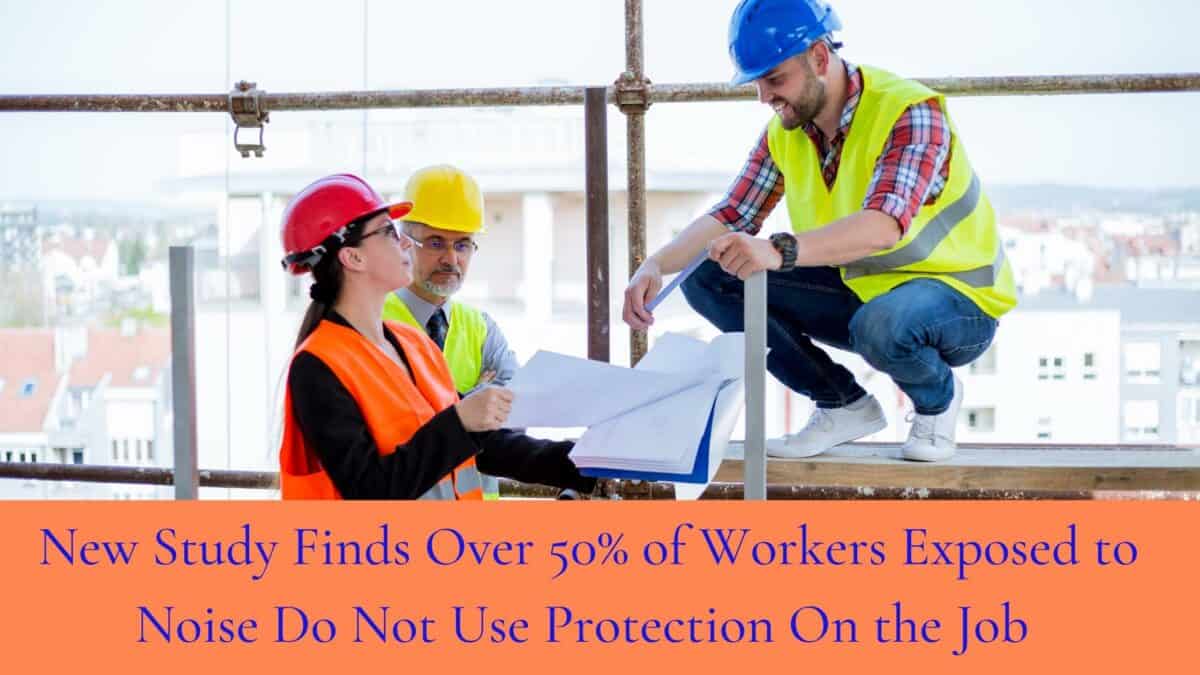Noise-induced hearing loss is a very common kind of hearing loss. And you guessed it, it’s caused by exposure to very loud noise. People who work in noisy professions often have a high risk of noise-induced hearing loss. However, noise-induced hearing loss is preventable! Proper hearing protection can greatly reduce the risk of noise-induced hearing loss. But a new study estimates that up to half of workers who face daily noise exposure aren’t wearing hearing protection.
Occupational Hearing Loss
Occupational hearing loss is hearing loss that can be traced back to workplace noise. Occupational hearing loss can be very sudden, after one extremely loud noise. It can also be gradual, after many years of working in a noisy environment without the right hearing protection.
According to the CDC, roughly 22 million American workers are exposed to dangerously loud noise every year. And not all of these workers are taking steps to protect their hearing health.
53% of Workers Aren’t Wearing Hearing Protection
A new study published in 2021 looked at data from thousands of workers. They analyzed data from the National Health Interview Survey in 2007 and 2014. From the 2007 survey, they looked at data from 15,842 workers, and from the 2014 survey, they looked at data from 23,656 workers.
They found that 53% of workers weren’t wearing hearing protection! Over half of the people taking the survey did not say “always” or even “usually” when asked about wearing hearing protection during noise exposure. Instead, they answered “sometimes” or “never” to indicate that they rarely wore hearing protection.
Who’s Not Wearing Hearing Protection?
Workers from all industries do not wear hearing protection often enough. However, workers in the Accommodation and Food Services industry were the least likely to wear hearing protection. In fact, 90% of workers in that industry reported that they didn’t wear hearing protection!
The study found that millions of works don’t wear hearing protection. This is most prevalent in industries where there is less noise exposure, but still enough noise exposure to damage hearing. For example, food services workers may not need hearing protection during every shift but may be exposed to dangerously loud noise during some shifts.
Workers from all industries do not wear hearing protection consistently. Some industries that have dangerously loud noise also made the list for industries lacking hearing protection. 74% of workers in agriculture, forestry, and fishing, and hunting industries reported that they didn’t wear hearing protection. Meanwhile, even in construction, where it’s well known that job sites can cause hearing loss, 52% of workers said they didn’t wear hearing loss.
Raising Awareness about Noise-Induced Hearing Loss
“Increasing worker awareness and providing training about the importance of proper and consistent use of hearing protection devices can protect workers from the effects of hazardous noise,” says Dr. Elizabeth Masterson, a study co-author. If you or someone you know works in a noisy industry have a conversation about hearing loss. Learn more about noise-induced hearing loss and find out more about hearing protection.
Finding the Right Hearing Protection
Each industry has different hearing protection needs. Not every worker will need the same level of hearing protection as another worker. “We need to overcome barriers to hearing protection device use by ensuring that workers have hearing protection that is comfortable and does not overprotect from noise so they can hear speech and other important workplace signals,” explains Dr. Masterson.
If you work in a moderately loud environment, foam or wax earplugs can block dangerously loud noise, while still letting you hear conversations. They’re also lightweight and inexpensive, so you can easily have a few pairs on hand.
If you work in a very loud environment, earmuffs are a better choice for protecting your hearing. These greatly reduce the noise levels, keeping your hearing safe. However, they do decrease soft sounds as well, so you may not be able to hear conversations while wearing earmuffs.
Digital Hearing Protection
If you’re looking for another solution, digital hearing protection can protect your hearing and help you hear. These custom-molded devices analyze the sound waves around you. When sounds are at a safe volume, the sounds reach your eardrums as they normally would. But when sound waves are dangerously sound, these devices block those sounds, protecting your hearing.
You’ll be able to hear soft sounds and follow conversations while keeping your hearing safe. Visit us to find out more about digital hearing protection.


